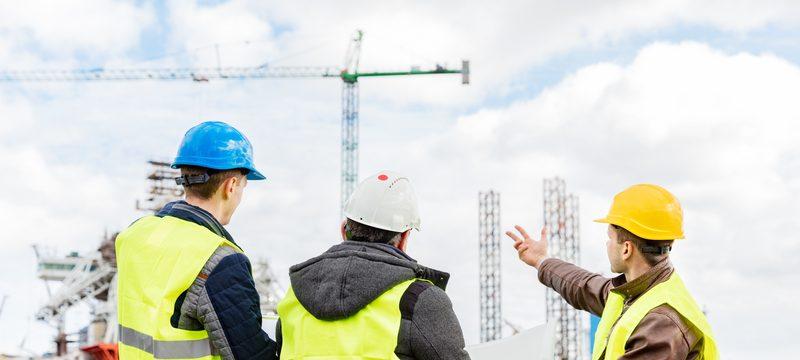Danger in The Construction Industry; How to Keep Yourself Safe, What to Look Out for
Construction is one of the largest industries in the US, and also one of the most dangerous. Construction sites can be a health and safety nightmare, with almost every conceivable hazard existing within these constantly changing work environments. In today’s blog, we’re taking a closer look at those safety issues – both how they happen and how to avoid them.
Moving Objects
Construction sites can be hectic, with the amount of constantly moving people, vehicles, tools, and heavy equipment – usually on uneven terrains and surfaces. Being struck by a moving object accounts for about 10% of all fatal construction injuries. To prevent accidents with moving objects, all employees should be trained on the site safety rules, pay attention to their surroundings, and wear protective gear. Vehicles and heavy equipment should be outfitted for safety and regularly checked by the maintenance team.
Slips and Falls
With the diverse range of activities happening on a construction site at any time, slip-and-fall injuries happen on a daily basis. Construction sites can have uneven or wet ground, holes in the ground, buildings at various stages of completion, heavy equipment, and stored materials. Many slips and falls can be prevented by managing the work areas and making sure the access routes are clear from obstacles. Additionally, workers should wear their safety gear, and any potentially hazardous areas should be marked with appropriate signage.
Electrical Hazards
Construction industry workers also face injuries from electrical shocks or blasts. This can happen during refurbishment projects, when workers are exposed to overhead power lines and cables, underground electrical cables, and electrical machinery. Electrical shocks can also lead to secondary injuries, such as a fall from a ladder or scaffolding. Due to these significant hazards, those who perform electrical work should be trained and qualified electricians; they should also have appropriate safety gear and equipment.
Loud Noise
Construction is a noisy business, and as a result, loud industrial sounds are a common work hazard. Exposure to repetitive and excessive noises can lead to long-term hearing problems and even deafness. Additionally, if a construction worker is distracted by a sound, they are more likely to get hurt. To prevent noise-related injuries, construction workers should wear ear protection designed especially for loud work environments.
Working at Height
The construction of buildings requires employees to work at tall heights. Falls, one of the most common fatal worker injuries, are caused by unstable work surfaces, faulty or failure to use protection equipment, or unsafe scaffolding and ladders. These injuries can be prevented by working on the ground level whenever possible, using equipment with extra safety levels in place, safety nets, and employee training.
Handling or Exposure to Hazardous Materials
Vehicles and equipment are constantly being moved around on a construction site, kicking up particles that can often be toxic. These small, often invisible fibers, can damage a worker’s airways, even leading to serious conditions like asthma and lung disease. Before a construction worker sets foot on a site, they should be provided with information about the type of potentially hazardous materials being used. They should also receive the appropriate safety gear and training.
Injured on a Construction Site? Contact The Law Offices of Laura Lanzisera
While construction sites are one of the most hazardous work environments, risks can be minimized with proper safety training and equipment. But accidents do still happen. If you have been injured or developed an illness on a construction site and need help with your workers’ compensation case, contact The Law Offices of Laura Lanzisera. Our team can explain Georgia’s workers’ compensation system and the benefits available for your injury or disability. Contact our office today for a free consultation.
